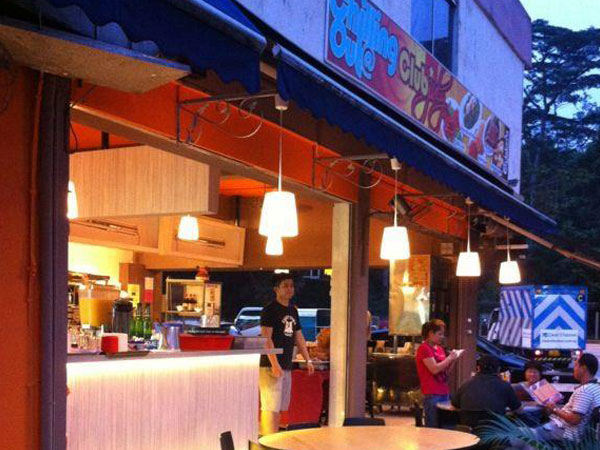On Upper Thomson Road, feeling the tug of home

Chilling Out@Club July, one of the eateries lining Upper Thomson Road in Singapore. PHOTO FROM THE RESTAURANT’S FACEBOOK ACCOUNT
SINGAPORE—From Marymount MRT station, any bus I board to work traverses Upper Thomson Road. It is a long stretch and is one of the busiest in Singapore. Well, considering Singapore’s dense traffic, which road is not? Upper Thomson is swamped with traffic lights and loaded with road signs and intersections.
JCU Singapore, the school where I work as a literacy teacher, stands proud along this road. JCU students, employees and other people who live and work nearby cross this road, which is connected to a lot other roads in the vicinity. It becomes busier during morning and evening rush hours and during lunch times.
I see a lot of people from different racial backgrounds every time I walk on Upper Thomson to and from my workplace. Up north of JCU is Casuarina Road, lined with restaurants that offer delectable dishes. Indian curry is famous here. Down the stretch is Sembawang Food Centre, a place known for its makan and chicken rice, and where I usually sip kopi, Singapore’s local coffee. I’m always astonished by such a busy highway loaded with wheeled machines—buses, cars, cabs, lorries. I’m also often stunned by the different languages I hear, as people of different ethnicities queue for food or sit and chat near the food stalls. I smile at their whims and caprices as they enjoy the company of their friends or colleagues.
All the while, I still can’t imagine that I’ve been living in a busy and still fast-growing metropolis. Then, one drizzling afternoon, my colleagues and I were stuck in a local café, unable to go back to our workstations. I was brought to a sudden halt. My mind started to take me back to the serene Tops Mountain View, a famous hill that allows one to get a glimpse of the entire Cebu City. I was suddenly savoring the calm breeze from the breathtaking Bantayan beach and the mellow, sober music played by some optimistic local musicians and artists at Outpost Bar.
I was transported further to Calle Z, a local restaurant in Tacloban City, which serves the tastiest bulalo in town, then to Rafael’s Farm in Babatngon, Leyte, which stands proud of its splendid landscape and lush green gardens amid commanding mountains. Further down, my mind jostled me to our home in Bool, Culaba, Biliran, making me feel the cold gust of the west wind as I strolled around my grandparents’ farm where my cousins and I used to play those memorable games in the mid-’90s.
A question popped in my head: Am I enjoying this busy life in the Lion City, or do I miss the life back there in the province, a life that is quiet, rustic, pastoral? Where one does not hurry to catch the train or queue in the bus terminal? Where one can still splash in the lake on a summer day or dive into the deep sea of Mactan or rest on the sands of Boracay while gazing at the horizon—that line where the ocean’s surface romances the blue sky?
After a while, my consciousness whispered to me:“Find home wherever you are!” I asked myself, “Is my consciousness giving me a better advice, a better option, a choice worth making?”
Come on! It is just a road! A busy road! No big deal! I assured myself.
But Upper Thomson forces me to create mental pictures and bids me to indulge in a recollection of the past. Such a road makes me reckon with things back home and brings me to the point of nostalgia.
“You must be thinking deep,” my American colleague uttered, discovering my silence.
I smiled. Then, the mental images I had in mind began to shatter. But I tried to contain them. I tried to restrain and re-form them. After all, distance allows people to be sharper of mind.
I remember the Guyanese poet Grace Nichols, who said, “Wherever I hang my knickers, that’s my home.”
Thanks to Upper Thomson Road for keeping me on my feet. Despite the distance, despite being lured by the diaspora, despite the intense longing for home, I’m able to stand my ground. I thank Upper Thomson Road for being a mirror of home.